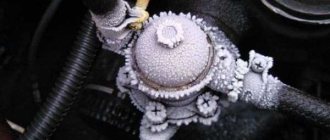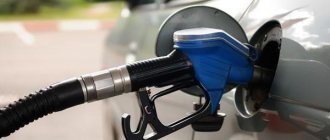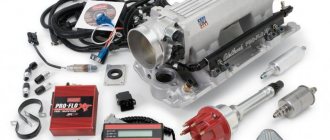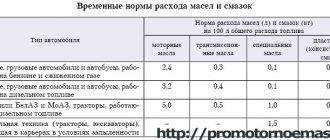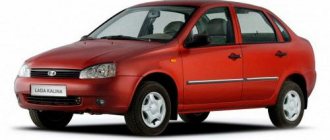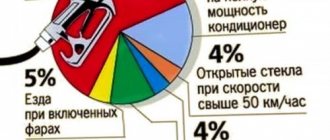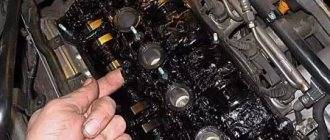With the constant increase in the cost of gasoline at Russian gas stations, which has been observed for quite some time, every motorist has at least once thought about how economical small cars can be. However, the actual fuel consumption of such cars does not always coincide with that declared by the manufacturer. Taking into account the huge number of small models from various manufacturers, it is sometimes difficult to choose one of them if you decide to purchase such a “baby”. It will not be possible to describe all such cars in one article, and therefore we will look at a Soviet and then Russian-made Oka car, the fuel consumption of which is declared by the manufacturer at the level of 3 l/100 km.
A little history of the VAZ-1111
The first such car rolled off the assembly line of the Volzhsky Automobile Plant in 1987. It was the first minicar of its kind to appear in the Land of the Soviets. VAZ could not produce such a “baby” on its own due to the fact that all the equipment was specialized for the production of Lada cars. That is why two more plants were brought in to help: KamAZ and SeAZ.
Due to their low cost and fairly low consumption, these small cars remained in demand even after the collapse of the Union. With the sharp collapse of the ruble at the turn of the century, the price of a car fell to a minimum, and therefore sales increased sharply, but this did not last long. By 2007, the car was hopelessly outdated.
For an initial acquaintance with the car, you can watch a short video.
Engines that were installed on the VAZ-1111
From the moment the first car was assembled until 1998, a truncated engine from a VAZ-2108 was used as a power unit. This was exactly half of a full-fledged 2-cylinder unit with a capacity of 30 hp. With. Many at that time dreamed of an Oka car, the gasoline consumption of which was 4-5 l/100 km, while the manufacturer declared 3 l/100 km. Between 1998 and 2007, cut-down engines from the VAZ-21083, which were 5 hp more powerful, were installed on the car. With. The model became known as VAZ-21113.
Time passed, and the consumer wanted more power from a minicar. The manufacturer, as always, met the buyer halfway. Three-cylinder engines with FAW injector began to be installed on the VAZ-11113. The power of the small car increased from 35 to 53 hp. s., and the volume increased from 0.75 to 1.0 l.
Oka 0.7
From the very beginning, a VAZ-1111 micro-displacement carburetor engine with a volume of 649 cm3 was developed for the Oka. This two-cylinder engine was capable of developing a power of 30 hp. and reach a torque of 45 Nm. The engine was paired with a 4-speed manual transmission.
Oka fuel consumption rate is 0.7 l per 100 km
- Maxim, Ufa. I have an Oka VAZ-1111, manufactured in 1994. Despite its unpresentable appearance, the car is not bad and suits me 100%. For its weight, the engine power is quite enough. By the way, consumption in the city is quite normal - 5-7 liters, but on the highway, if you drive too hard, sometimes it can reach 10 liters.
- Timur, Ryazan. I took it literally for a couple of years - it was stupid to learn how to drive. Even if I knock or break it, I don’t mind at all. However, everything turned out to be not as sad as I thought. It drives and that’s the main thing, although it doesn’t even smell like comfort. The average consumption is 6 liters – which is a lot for the tiny volume under the hood.
- Georgy, Tambov. Oka is my first car. I got it from my dad, and before that it had been sitting in the garage for five years and was rusting. Of the advantages, I will only note its unpretentiousness and the fact that it is the same Lada, only neutered and trimmed down. Gasoline consumption with a normally adjusted carburetor is 6 liters in the city, more on the highway, because the gearbox is 4-speed and at more than 90 km/h it eats gasoline like a cow.
- Irina, Rostov. When I decided to learn to drive a car, I went to a driving school, after which my father finally entrusted me with his car - a 1992 Oka. At that time, for me it was just something - but now I understand that the car was an outright log and not worth a good word. It broke down constantly, the consumption in the city was no less than 6 liters, I now have this consumption on my Hyundai with an engine 2.5 times more and 3 times more powerful.
- Sergey, Moscow. At one time, I rode a 1993 Oka for about a year and a half. This was in 2008 - I needed wheels, but there was no money, so I took an Oka, which at that time cost me about $300 - just ridiculous money. I’ll tell you that in fact everything is not as bad as it seems - if we put aside emotions, demands for comfort and all that, then this car fulfills its main purpose of transporting you from point A to point B 100%, and nothing more. need to. Consumption in the city is on average 6.5 liters, and it is generally undemanding when it comes to the quality of gasoline.
Some characteristics of the Oka car
For example, let's take a first-generation car. The relatively small trunk with a volume of 210 liters did not frighten summer residents at all. The car made it possible to go back and forth several times, using the same amount of fuel as was spent on a one-way trip on the Volga. For the late 80s, the Oka with a 30-liter gas tank was not bad; the new engine consumed no more than 4 l/100 km. However, the service life of the power unit turned out to be small. A huge number of cars “died”, barely crossing the 25,000 km mark.
“Oka” was originally conceived as an alternative to the well-known “disabled” vehicle (SMZ S-3D). And it should be noted that the replacement turned out to be worthy. Compared to the SMZ S-3D with an engine from an IZH motorcycle and holes in the floor, body (in general, everywhere), the Oka seemed to be the height of engineering. It was warm in it, it worked quieter, and it went faster.
If we talk about consumption in the city, the Oka initially consumed about 6 l/100 km. Over time, the engine wore out, and the figure increased and could reach 10-12 l/100 km.
Does not control tire pressure
The air from a car's tires leaks over time. This process occurs even faster if the tires are damaged or exposed to severe temperature changes.
The more flat the tire, the more it deforms when driving. Resistance increases, as does fuel consumption. Therefore, often stop by a workshop or gas station where there is a tire service - there the workers will adjust the level of atmospheric pressure in the tires of your car with maximum precision.
Tires inflated above normal levels do not affect gas mileage as much, but still cause the car to consume more than at the ideal pressure. In addition, in this case the tires wear out easier, and you feel every bump when driving on the road. And the car's controllability is significantly reduced.
Disadvantages of small cars noted by owners
Among the main disadvantages, according to users, is the error of the speedometer and odometer. The readings from the device are greatly underestimated, as a result of which it is practically impossible to find out the real consumption of the Oka. This has been verified by more than one owner with the help of other cars when driving in pairs. The magnitude of the error is truly amazing. On average, instead of the 300 km traveled, the VAZ-1111 odometer showed a result of 100 km less.
Today, the owners agree that, given the age of the car, the Oka, whose fuel consumption is less than 10 l/100 km, is a good car. Anything more is no longer the norm. This is such a “psychological” mark.
Recommendations
Comments 22
I remembered one nuance, I drilled a 92.5 jet. It turns out I had the following configuration: 1 camera: 95 -190 2 camera 100 - 95
95.5 - 165 preferably 155. first! second 95.5 - 125! consumption is about 4.5 l! engine - mileage 93,000 km!
Don't tell fairy tales! 8-carb, 13-tires, mileage 93,000, well, I turned it down... Probably measured the consumption while standing still?
I measured it for myself! and I wasn’t going to prove anything to anyone! and I'm not going to argue!
95.5 - 165 preferably 155. first! second 95.5 - 125! consumption is about 4.5 l! engine - mileage 93,000 km!
oh well, 4.5, such a consumption can only be at a speed of 60 km. ! And do not argue
I measured it for myself! and I wasn’t going to prove anything to anyone! and I'm not going to argue!
oh well, 4.5, such a consumption can only be at a speed of 60 km. ! And do not argue
Well, first of all, your first chamber is very lean; on this carburetor, the fuel nozzle in the first chamber must be at least 95, otherwise the mixture is lean and there will be excessive consumption due to a drop in power. Secondly, your second camera is terribly enriched. The fuel there should be 95, the air 145. It is clear that each engine is individual in some way, but not that much. don't be afraid to enrich the first chamber. Also, be sure to check the carb for air leaks under the sole, it is often bent, sucks air, the mixture becomes terribly lean and consumption goes down again. Also, be sure to check that the idle speed EMC tightly presses the XX jet and closes it completely when turning it off. You can't pull the valve too hard; you'll break the thread. The main thing is just to choose the right rubber seal for the valve and everything will be perfect
The carb was bent, the XX sensor works and shuts off when the chip is disconnected from it, the engine stalls
Guys! Each engine is INDIVIDUAL! The combination of jets is different for everyone! I played with jets for about a month until I found the right one. 1 to. 190/95. 2k. 165/97.5. So you need patience and a handful of jets,
and what is the resulting cost?
7l. city, winter. In summer 6-6.5.
Why did you put eyepiece jets there? GVZh2 put 125-145 zy idle with floating speed you did not have because of the over-tightened or under-tightened EMC. The jets have nothing to do with it at all. At XX, try to barely twist it to the sides and seize the moment when everything is stable
Yes, I rearranged the windows. idling smooth, no rpm floating
use standard 21083. The volume of the pot is the same as the chisel, therefore the chisel jets should also be on the Solex
Read more: Interior vibration at idle VAZ 2114
the volume is the same only there are 4 of them and we have 2, so for two I think it will be too much
At one time it only sucks from one cylinder. They work in turns and not all at once. and the volume of the cylinder, as is already known, is the same. Draw your own conclusions I installed a new 08 carb without any adjustments or selection of jets. I went straight away, consumption was normal. So stop being perverted and return everything on the carb to its original factory state
My air in the first chamber was 190, 165 is not enough, how did it end up there?
I had 190 and changed it to 165 because during acceleration, at first it didn’t drive, as if it was being held, and then after a while it started accelerating normally
I seemed to be driving normally, and economically, and there were spark plugs with perfect soot. To make it accelerate more vigorously, I drilled out the fuel jet of the second chamber with a 1mm drill, or you can look for a 100-102 jet.
The production of the Soviet and Russian small car Oka VAZ 1111 began back in 1987. Thanks to its low cost and economical operation, this small car won an army of fans, so it was produced until 2007, after which it was discontinued as obsolete. One of the attractive features of the Oka car is its low fuel consumption per 100 km, which is why it was readily bought during the crisis years, when the price of gasoline rose sharply and citizens’ incomes fell. The popularity of the model is evidenced by the fact that more than 700 thousand cars were purchased during its production.
Speed characteristics of a minicar
When driving outside the city, the Oka is quite capable of accelerating to 110 km/h, however, as the owners note, the ride becomes quite uncomfortable. The steering wheel tries to jump out of your hands, you have to constantly squeeze it very tightly. The suspension senses the slightest unevenness in the road surface and instantly transmits them to the driver’s “fifth point.” This is not surprising; with such small wheels (12 inches), it is simply impossible to drive through the pits in any other way.
Users named another drawback as the difficulty in finding spare parts when making repairs, and this machine breaks down quite often. Today, such minicars are no longer produced, and therefore sales of parts have stopped. Of course, in such cases it is much easier for a Russian car enthusiast than for a foreigner caught in a similar situation. Our craftsmen themselves have learned to make spare parts needed for repairs, but it is not always possible to find and process truly high-quality metal. Therefore, long-manufactured parts rarely last.
Continuing the topic of shortcomings, it is worth mentioning that the first breakdowns for the owners began after only a year and a half of operation, and everything began to “crumble” at once. The biggest problems were caused by ruptures in the stove pipes and thresholds that were not resistant to corrosion. Those who were particularly unlucky with the body had to digest them twice a year. However, in fairness, it is worth noting that if the owner was meticulous and closely monitored the car, the Oka was capable of driving up to 100,000 km. There are quite a lot of such cars on Russian roads now. And they run quite briskly.
Final word about VAZ-1111
Despite all the shortcomings, the small car was a breakthrough for its time. Even today, many do not want to give up this car, continuing to drive it along the roads of our vast homeland. Even Oka, whose fuel consumption approaches 10 l/100 km in the city, has not lost its popularity. Who knows, perhaps in the near future our design engineers will create something similar. And now we can confidently call the VAZ-1111 Oka car legendary. And let's hope that it will serve its owners for a long time.
Oka 1111 and 11113 fuel consumption per 100 km
Oka is a car produced at the Russian factories VAZ, SeAZ and KamAZ. The history of its development begins back in the 1970s at the Serpukhov Automobile Plant, and the production of the Oka itself started only in 1988. Over a twenty-year production period, a total of about 700 thousand cars were produced.
Fuel consumption rate per 100 km
From the very beginning, the car was produced with a 0.7 liter engine with a power of 30 horsepower. The maximum speed that the 30-horsepower engine could reach was 120 km/h, and its fuel consumption was 6.5 liters in the city cycle and 5.5 liters on the highway.
Owner reviews on gasoline consumption
- Sergey, Rostov. Lada (VAZ) 1111 (Oka) 0.7 MT 2005. This was my first car, now I drive the thirteenth model. The car is not bad in that it is easy to repair and has economical consumption. On average, about 6 liters are consumed per 100 km. The whole time I only cleaned the carburetor and that’s it. The car is very suitable for beginners.
- Maxim, Moscow. The car is so-so, since the Oka is designed to carry only one person, that is, just to take yourself for a ride. The quality of spare parts is at the lowest level. I had to completely go through everything in my 1993 VAZ. The only good thing is the consumption - in the city no more than 7 liters, on the highway 5.5-6 liters.
- Taras, Ufa. I took the car from my hands. Immediately after purchasing the 2000 Oka, I changed the brake pads and fuel filter. Overall, it’s a good car, especially well suited for driving around the city; there are no problems with parking. Due to the low weight on the track, the car is thrown in all directions. Fuel consumption is 6-6.5 liters.
- Georgy, Ryazan. I've been driving the 1994 Lada Oka for a long time, and I'm still happy with everything about it. Works 100 percent. The most important thing is to look after the car and change consumables. The 0.7 MT engine is peppy, especially at startup. Consumption is also excellent - only 6.5 liters in the city and 5.5 liters on the highway.
- Irina, Tambov. Lada 1111 0.7 MT 2007. The car is quite good and maneuverable. Just right for learning how to drive and what is under the hood. Consumption on average is 6 liters. The downside is that after a year and a half the car starts to fall apart no matter how you look after it. Very often the pipes from the stove break, plus every 6 months you have to weld the thresholds.
In 1995, the 0.7-liter was replaced by a new 2-cylinder engine with a volume of 0.8 liters. The power of this unit is 33 horsepower, and the maximum speed is 130 km/h. At the same time, fuel consumption in the urban cycle is 7.4 liters, on the highway - 5 liters.
Real fuel consumption
- Vladimir, Peter. Lada (VAZ) 11113 (Oka) 0.8 MT 2000. The car, of course, lacks comfort, but its traction qualities are very normal. The engine runs well. Doesn't consume much oil or fuel. Per 100 km it comes out to around 6-6.5 liters. The big disadvantage of the Lada is its weak body, which does not resist corrosion well.
- Andrey, Orel. I see only advantages in my 2004 Oka. A very compact car - you can drive anywhere. The 0.8 MT engine consumes little fuel: about 7 liters in the city, 5 liters on the highway at 70 km/h. Despite such low consumption, the engine maintains good dynamics and can pull two people without any problems.
- Evgeny, Vladimir. I bought an Oka in 2007 with low mileage. The car is not bad, but now I have changed to another one. After modifying the suspension, the handling was excellent. I drove it for 4 years, after which the body began to crumble and became rather weak. The great advantage of this car is the 0.8 MT engine, it accelerates well and maintains a speed of 120 km/h on the highway. Consumption 7-7.5 liters.
- Kirill, Kursk. Lada (VAZ) 11113 (Oka) 0.8 MT 2002. Despite the many shortcomings of the car, it is still not bad. The salon, of course, without any amenities. It breaks down all the time, but repairs cost mere pennies. Bumpers burst very often. Fuel consumption is low - about 7.5 liters in the city, 5 liters on the highway.
- Dmitry, Ulyanovsk. I took the car second-hand (1997 model). It sat in the garage for a very long time. I changed all the rubber parts because they had dried out. I also had to change the wiring - it melted a lot. Now I’m driving, in principle, everything is fine so far. Gasoline consumption in the city is 7.3-7.5 liters, on the highway at 100 km/h 5.5 liters.
